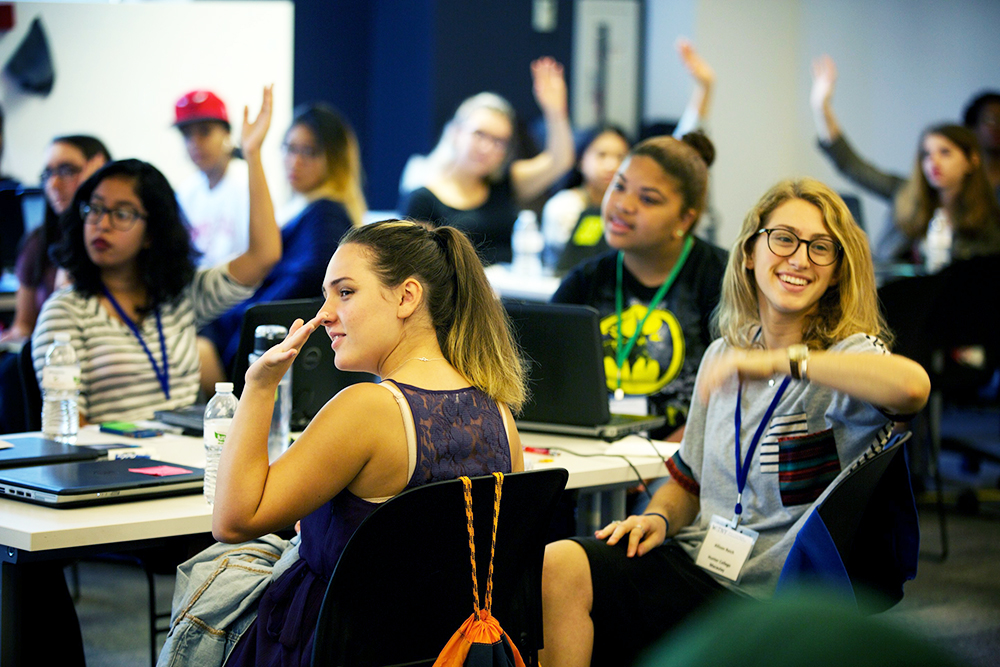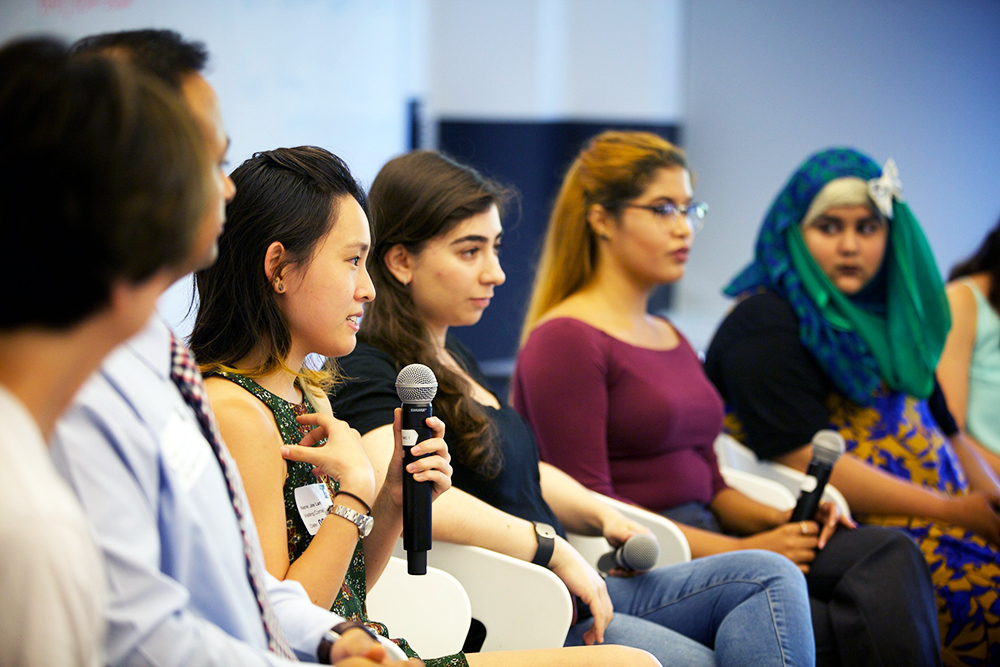A New Summer Program at Cornell Tech Helps Young Women Become Tech Entrepreneurs
Categories
Blog, Industry Collaborations, New York City, People in Tech

It started with a simple question: “Why?”
A group of young women approached a passing stranger, wanting to hear about a recent purchase.
“Why’d you buy that particular lotion for your wife?” Apparently, it was a question the stranger had never thought about before, but it was one that prompted an honest assessment of needs and values—and it gave the women their first taste of how design thinking works in practice.
These young women were participating in the WiTNY Summer Studio at Cornell Tech, part of the Women in Technology and Entrepreneurship in New York initiative. The initiative is a partnership between Cornell Tech and CUNY that aims to help women gain a stronger foothold in the field of technology.
Over the following two weeks, 42 young women, all rising freshmen at City University of New York (CUNY) schools, learned how to unpack the user experience, code a basic application, and address a real-world customer service challenge for Verizon stores. The program culminated in a presentation to Verizon executives, who gave them feedback about their designs.
Toddi Gutner, a design thinking lecturer at Cornell Tech who helped organize and run the event, explained that while the number of tech jobs is increasing, the percentage of women studying technology has actually been declining for decades.
“That’s not okay,” said Gutner. “We want to change that, and one of the first steps is making sure young women are comfortable entering the field.”
WiTNY is led by Judy Spitz, Verizon’s current Executive in Residence at Cornell Tech. Her focus is creating more opportunities for women to pursue education and to build careers in technology.
“The Summer Studio program is meant to create a glide path for these young women — welcoming and stimulating them to pursue further coursework in tech at CUNY,” said Spitz.

Aided by Spitz, Gutner, and a number of professional programmers who volunteered to assist, the students were challenged to envision a more engaging in-store service experience for Verizon customers. This meant getting feedback from users in the real world before they could even start prototyping.
“One of our first tasks was to figure out how to develop a product for the consumer,” said Amy Camilo, one of the rising freshmen who participated. “Asking ‘why’ helped us get to the root of the problem quickly. By engaging with people directly, we were able to figure out their needs, and what’s not working.”
For several hours each day, the women attended lectures on how to think about and problem-solve a wide range of complex issues. Then, the students—some of whom had never before had exposure to coding—began prototyping their applications using a combination of coding languages, such as HTML, CSS, JavaScript, Python and Java.
But the real crux of the studio was honing in on the design thinking process and developing the critical thinking skills needed to assess what’s truly meaningful to the user.
“The program really pushed me to use design thinking and figure out where application programming can meet design in the middle,” said Brittany Greve, a student who plans to study computer science at Hunter College in the fall.
While Greve had prior experience coding and felt confident in her abilities to build out an application, this was the first time that she had been forced to think ahead about the end goal. “It wasn’t about straight coding, it was about knowing how to look for problems I could fix with code,” she said.
By conceptualizing empathy and human-centered design, and by observing and listening to users’ concerns, Gutner said, students were able to actually decipher each user’s mindset. And, she pointed out, that skill will remain useful in almost any area of life, even for students who decide not to continue on a tech path.
One such student is probably Camilo, who wants to become a medical doctor. “Originally,” she recalled, laughing, “I was interested [in the program] because I thought it had something to do with hacking, and I love detective work and [the television show] Criminal Minds.

“Now I see how technology and design thinking could be applied to my patients when I’m a doctor. How could I make their experience better?”
This type of interdisciplinary, cross-pollinating thinking is exactly what the program is all about.
Although the first WiTNY Summer Studio is over, there are already plans to continue it, and not just during the summer. After all, what Spitz wants—an increase in the number of women entering CUNY schools to pursue technology careers—is large-scale and requires long-term change.
In the short-term, moving the needle even a few percentage points would mean that the program is working. But to hear the voices of the students who attended the pilot program, it sounded like it had already taken off.
“Being together with these women for two weeks was so empowering,” said Greve. “It has been exciting to meet other women in our area going to so many of the colleges at the City University of New York. Together we’ve built up a support network and community we know we can rely on.”





